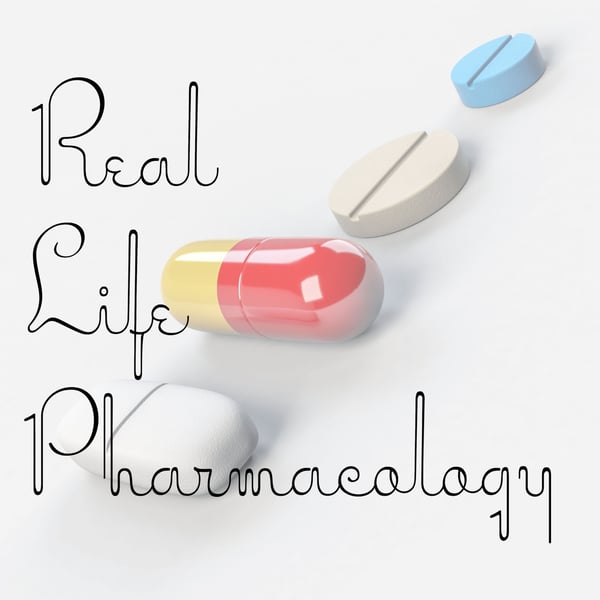Celecoxib Pharmacology
Real Life Pharmacology - Pharmacology Education for Health Care Professionals
Eric Christianson, PharmD; Pharmacology Expert and Clinical Pharmacist
5 • 716 Ratings
🗓️ 29 August 2019
⏱️ 12 minutes
🧾️ Download transcript
Summary
Kidney function is important to monitor in our patient on celecoxib. It is especially important in patients taking ACE inhibitors, ARBs, and/or diuretics.
While GI bleed may be less likely with celecoxib compared to traditional NSAIDs like indomethacin and ibuprofen, it still needs to be monitored for.
Digoxin concentrations may be increased with the use of celecoxib.
Celecoxib is generally dosed twice per day as the half-life of the drug is in the ballpark of 10-12 hours.
Transcript
Click on a timestamp to play from that location
| 0:00.0 | Hey all, welcome back to the Real Life Pharmacology podcast. I am your host, Eric Christensen. |
| 0:05.9 | And you can certainly reach out to us at real life pharmacology.com. Also, you can track me down on LinkedIn as well. |
| 0:17.1 | So getting into the podcast today, let's cover cellicoxib. |
| 0:21.5 | So this medication is classified as a Cox2 inhibitor. |
| 0:27.1 | And essentially, it's going to have similar clinical effects to traditional insides. |
| 0:34.6 | So I think that's a good place to start. |
| 0:38.3 | Now if you remember Cox 1 and Cox 2, |
| 0:42.3 | Cox 2 is thought of as an enzyme that mediates |
| 0:48.3 | prostate glandins that regulate pain, fever, and inflammation. |
| 0:58.7 | Cox 1, that can be a little bit more of the anti-platelet type activity |
| 1:04.8 | and things of that nature. |
| 1:07.3 | So mechanistically, how this drug works is it inhibits cyclooxygenase 2 or Cox 2 that reduces those prostaglandins by inhibiting that enzyme. |
| 1:20.7 | And those, again, those prostaglandins are responsible for pain and fever and inflammation. |
| 1:26.4 | And so by inhibiting those, reducing the amount of prostate glandants, |
| 1:30.3 | we essentially reduce pain and inflammation, |
| 1:33.3 | which flows into what this medication is used for, |
| 1:37.3 | and that's various pain syndromes. |
| 1:40.3 | Generally, we, you know, reserve the insides and cox twos for more inflammatory type pain, |
| 1:49.5 | but they certainly can be used for like osteoarthritis and things of that nature too. |
| 1:56.9 | Adverse effect profile, so there is GI risk with cellicoxib. |
| 2:04.2 | Now, it's likely less than a drug like endomethcin or ibuprofen, traditional neds, |
| 2:10.8 | but the risk still is there. |
... |
Please login to see the full transcript.
Disclaimer: The podcast and artwork embedded on this page are from Eric Christianson, PharmD; Pharmacology Expert and Clinical Pharmacist, and are the property of its owner and not affiliated with or endorsed by Tapesearch.
Generated transcripts are the property of Eric Christianson, PharmD; Pharmacology Expert and Clinical Pharmacist and are distributed freely under the Fair Use doctrine. Transcripts generated by Tapesearch are not guaranteed to be accurate.
Copyright © Tapesearch 2025.

